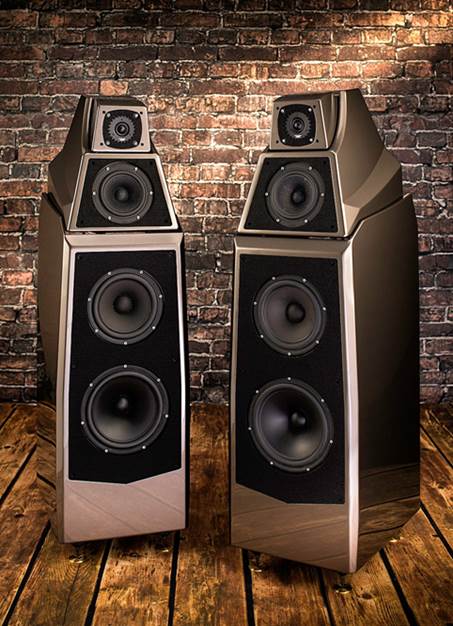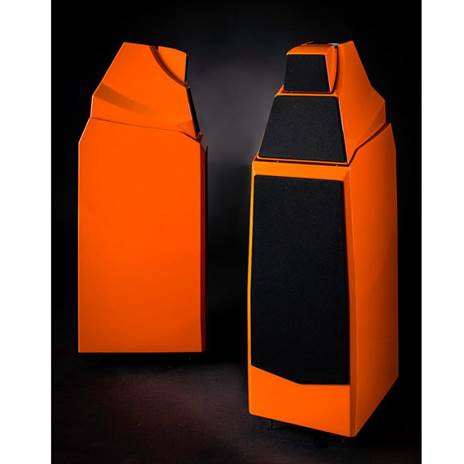Like a half-scale model of the mighty
Alexandria XLF, the Alexia may be Wilson’s best all-rounder. Ever.
Unless people acquire the ‘best’ models in
a product range, they will always be aware of ‘something better’ in the
catalogue. It will gnaw at them. Porsche Cayman owners cower in the presence of
911 drivers, and one would not want to wear off-the-peg Ralph Lauren Polo next
to a dandy in made-to-measure Ralph Lauren Purple. So what befalls those who
cannot afford the Wilson Alexandria XLF?
Dave Wilson does not allow such doubts to
occur, because every speaker he makes fills a specific need based on size
versus performance, while pricing has always separated adjacent models widely
enough to preclude an internecine clash. Awkwardly, though, the WATT/Puppy,
upon metamorphosing into the Sasha W/P, found itself some distance in size and
price from the next model, the MAXX Series 3.
This chasm did not concern Wilson, because
the speakers are so different. He likens the Sasha to a highly-tuned Italian
GT, while the MAXX is ‘more like a muscle car’, ie, they will fill larger rooms
and they possess qualities better suited to high-end home cinemas.

Housing
a 1in dome tweeter, 7in mid and 8in and 10in woofers in three chassis allows
upper-section to tilt
A clever recipe
And yet… there was enough demand from both
customers and retailers to justify a new model for those who wanted something
closer in performance to the current flagship – the universally-acclaimed
Alexandria XLF (HFN, Nov ’12) but one that swallows no more real estate than a
Sasha. Faced with this grass roots demand, the company came up with a clever
recipe that would appeal to Sasha owners lusting for more, but who couldn’t
accommodate the beefier MAXX.
Its design concept recalls the kind of gear
audiophiles might fantasize about in the same manner as 12-year-olds picturing
their dream car: ‘What would happen if we merged the time-domain accuracy of
the Alexandria XLF with a form factor similar to the Sasha?’ It tells you
immediately that the speaker must not be a room-filling behemoth with the
presence of a Stonehenge pillar.
Instead, with a footprint close to the
Sasha’s it hosts only a slight increase in height: 10in, to be precise, due
mainly to the necessarily larger woofer enclosure. And while the Sasha/MAXX gap
is adamantly not being filled due to price, its cost falls almost mid-way
between theirs.

Sasha’s
it hosts only a slight increase in height: 10in, to be precise, due mainly to
the necessarily larger woofer enclosure
Firmly adjustable
To provide a goodly portion of the XLF’s
adaptability, precision and coherence, the smaller Alexia had to offer
adjustability of the midrange and tweeter positioning with to-the-millimeter
accuracy, according to room specifics and the location of the owner’s ‘hot
seat’. That meant a ‘head’ section with two movable segments but it had to fit
in a volume akin to that of the original WATT.
As a smaller speaker would lack the
overkill of an XLF enclosure’s mass and dimensions, Dave, son Daryl and
acoustic and electrical engineer Vern Credille focused initially on avoiding
the introduction of resonances and upper assembly instability crucial because
the integrity of the upper structure would determine whether or not the new
speaker could, in Wildon’s words, ‘substantially expand on the dynamic
performance, resolution and bandwidth of our existing compact loudspeakers’.
What you see here, then, is a genuinely
manageable floor stander with the complex time-domain adjustment of the much
larger XLF. Trail-and-error research lasting more than a year was undertaken to
transform the two-module architecture of the Sasha into something equally
svelte, yet with full adjustability of the tweeter and midrange in their own
‘mini’ cabinets, and boasting the rigidity demanded of a speaker fine-tuned
with torturous exactitude.
A freshly-conceived structure was required
because the design team ‘decided early on that the “ladder approach” was
incompatible with the desired Sasha-like form factor’. The Alexia’s
configuration places the tweeter modules’ support system and adjustment
hardware within the assembly of the midrange module. To provide the necessary
freedom of movement for adjustability, the upper sections each employ a captive
spike (there are three spike lengths) that rest on a 10-step alignment block,
as per the MAXX. The entire two-module assembly moves fore-to-aft, along eight
positions, while the tweeter is separately adjustable relative to the midrange
and, therefore, to the woofer enclosure.

Wilson
devised a milled aluminum cross-member above the tweeter module to form a rigid
link between the sides of the midrange module
Wilson devised a milled aluminum
cross-member above the tweeter module to form a rigid link between the sides of
the midrange module. This ensures that the rigidity of the hosting module is
not compromised, while aiding in the precise siting of the tweeter module.
Other adjustments allow the modules to be rotated for optimum on-axis
performance. Fitted to the bottom enclosure are drivers designed specifically
for the Alexia. They include 8in and 10in pulp/paper cone woofers to suit a
layout descended from the offset-diameter, two-woofer X-1 Grand SLAMM. The goal
was to extract comparable ass speed, dynamics and ‘authority’. The Alexia is
the first Wilson compact speaker to offer this, but it required and enclosure
in X-Material composite with a volume 18% larger than the Sasha’s.
For the midrange, Wilson chose the same
cellulose fiber/carbon 7in unit used in the XLF. The mid sits in a baffle made
of S-material, first developed for the Sasha, combined with X-material for the
rest of the cabinet. Above it is the new ‘Convergent Synergy’ tweeter, a silk
dome unit related to the driver that first appeared in the XLF, modified to
suit the Alexia’s single-midrange driver layout (as opposed to the XLF’s
two-midrange complement).
Other details include a rear port for the
woofer, rear venting for the mid and a sealed housing for the tweeter. As with
all Wilson speakers, the Alexias come with adjustable, proprietary spikes
beneath and robust speaker terminals that favor spade connectors. They are
available in a range of custom colors. And, yes, everybody loved the
‘Lamborghini’ orange finish seen here and at their Rocky Mountain Audio Fest
debut.